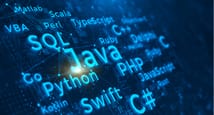- The Data Science Hype
- About Our Case Studies
- Why Data is the new Oil
- Defining Business Problems for Analytic Thinking & Data Driven Decision making
- 10 Data Science Projects every Business should do!
- How Deep Learning is Changing Everything
- The Career paths of a Data Scientist
- The Data Science Approach to Problems
Data Science, Analytics & AI for Business & the Real World™
Gain a comprehensive insight into the core principles of data science, data analytics, and artificial intelligence for ...Read more
Online
₹ 3299
Quick Facts
| particular | details | |||
|---|---|---|---|---|
|
Medium of instructions
English
|
Mode of learning
Self study
|
Mode of Delivery
Video and Text Based
|
Course overview
Data Science, Analytics, and AI for Business & the Real World™ online certification was designed by Rajeev D. Ratan - Data Scientist, Computer Vision Expert, and Electrical Engineer and is offered by Udemy which is designed for individuals who want to attain a solid understanding of how data science, data analytics, and artificial intelligence can benefit a business. Data Science, Analytics, and AI for Business and the Real World™ online course focuses on explaining all the fundamental theory and programming abilities required in a competent data scientist.
Data Science, Analytics & AI for Business & the Real World™ online classes is a practical course that includes over 30.5 hours of detailed pre-recorded video lectures, as well as 6 papers and three downloadable resources that cover a wide range of real-world business problems faced by data scientists. This course aims to bridge all of the gaps that discourage beginners while also allowing them to apply their data science and deep learning skills to real-world business situations. This training program also covers big data analytics, machine learning, and neural networks, as well as teaches about PySpark, Google Data Studio, Jupyter notebooks, Heroku, and Flask, among other tools and approaches that help individuals with their data analytics.
The highlights
- Certificate of completion
- Self-paced course
- English videos with multi-language subtitles
- 30.5 hours of pre-recorded video content
- 6 articles
- 3 downloadable resources
- Case studies
- 30-day money-back guarantee
- Unlimited access
- Accessible on mobile devices and TV
Program offerings
- Certificate of completion
- Self-paced course
- English videos with multi-language subtitles
- 30.5 hours of pre-recorded video content
- 6 articles
- 3 downloadable resources
- Case studies
- 30-day money-back guarantee
- Unlimited access
Course and certificate fees
Fees information
certificate availability
Yes
certificate providing authority
Udemy
Who it is for
What you will learn
After completing the Data Science, Analytics & AI for Business & the Real World™ certification course, individuals will be introduced to the fundamentals of data science and analytics through the use of artificial intelligence and machine learning techniques. Individuals will study the principles of deep learning and neural networks to analyze big data. People will learn about A/B testing, time series forecasting, probability testing, and hypothesis testing methodologies. Individuals will also learn about technologies and approaches such as Google Data Studio, Jupyter notebooks, Heroku, Flask, and PySpark that are useful for analytical activities.
The syllabus
Introduction
Setup (Google Colab) & Download Code
- Downloading and Running Your Code
- Colab Setup
Introduction to Python
- Why use Python for Data Science?
- Python Introduction - Part 1 - Variables
- Python - Variables (Lists and Dictionaries)
- More information on elif
- Python - Conditional Statements
- Python - Loops
- Python - Functions
- Python - Classes
Pandas
- Pandas Introduction
- Pandas 1 - Data Series
- Pandas 2A - DataFrames - Index, Slice, Stats, Finding Empty cells
- Pandas 2B - DataFrames - Index, Slice, Stats, Finding Empty cells & Filtering
- Pandas 3A - Data Cleaning - Alter Colomns/Rows, Missing Data & String Operations
- Pandas 3B - Data Cleaning - Alter Colomns/Rows, Missing Data & String Operations
- Pandas 4 - Data Aggregation - GroupBy, Map, Pivot, Aggreate Functions
- Pandas 5 - Feature Engineer, Lambda and Apply
- Pandas 6 - Concatenating, Merging and Joinining
- Pandas 7 - Time Series Data
- Pandas 8 - ADVANCED Operations - Iterows, Vectorization and Numpy
- Pandas 9 - ADVANCED Operations - Map, Filter, Apply
- Pandas 10 - ADVANCED Operations - Parallel Processing
- Map Visualizations with Plotly - Cloropeths from Scratch - USA and World
- Map Visualizations with Plotly - Heatmaps, Scatter Plots and Lines
Statistics & Visualizations
- Introduction to Statistics
- Descriptive Statistics - Why Statistical Knowledge is so Important
- Descriptive Statistics 1 - Exploratory Data Analysis (EDA) & Visualizations
- Descriptive Statistics 2 - Exploratory Data Analysis (EDA) & Visualizations
- Sampling, Averages & Variance And How to lie and Mislead with Statistics
- Sampling - Sample Sizes & Confidence Intervals - What Can You Trust?
- Types of Variables - Quantitive and Qualitative
- Frequency Distributions
- Frequency Distributions Shapes
- Analyzing Frequency Distributions - What is the Best Type of WIne? Red or White?
- Mean, Mode and Median - Not as Simple As You'd Think
- Variance, Standard Deviation and Bessel’s Correction
- Covariance & Correlation - Do Amazon & Google know you better than anyone else?
- Lying with Correlations – Divorce Rates in Maine caused by Margarine Consumption
- The Normal Distribution & the Central Limit Theorem
- Z-Scores
Probability Theory
- Introduction to Probability
- Estimating Probability
- Addition Rule
- Bayes Theorem
Hypothesis Testing
- Introduction to Hypothesis Testing
- Statistical Significance
- Hypothesis Testing – P Value
- Hypothesis Testing – Pearson Correlation
A/B Testing - A Worked Example
- Understanding the Problem + Exploratory Data Analysis and Visualizations
- A/B Test Result Analysis
- A/B Testing a Worked Real Life Example - Designing an A/B Test
- Statistical Power and Significance
- Analysis of A/B Test Resutls
Data Dashboards - Google Data Studio
- Intro to Google Data Studio
- Opening Google Data Studio and Uploading Data
- Your First Dashboard Part 1
- Your First Dashboard Part 2
- Creating New Fields
- Adding Filters to Tables
- Scorecard KPI Visalizations
- Scorecards with Time Comparison
- Bar Charts (Horizontal, Vertical & Stacked)
- Line Charts
- Pie Charts, Donut Charts and Tree Maps
- Time Series and Comparitive Time Series Plots
- Scatter Plots
- Geographic Plots
- Bullet and Line Area Plots
- Sharing and Final Conclusions
- Our Executive Sales Dashboard
Machine Learning
- Introduction to Machine Learning
- How Machine Learning enables Computers to Learn
- What is a Machine Learning Model?
- Types of Machine Learning
- Linear Regression – Introduction to Cost Functions and Gradient Descent
- Linear Regressions in Python from Scratch and using Sklearn
- Polynomial and Multivariate Linear Regression
- Logistic Regression
- Support Vector Machines (SVMs)
- Decision Trees and Random Forests & the Gini Index
- K-Nearest Neighbors (KNN)
- Assessing Performance – Confusion Matrix, Precision and Recall
- Understanding the ROC and AUC Curve
- What Makes a Good Model? Regularization, Overfitting, Generalization & Outliers
- Introduction to Neural Networks
- Types of Deep Learning Algoritms CNNs, RNNs & LSTMs
Deep Learning
- Neural Networks Chapter Overview
- Machine Learning Overview
- Neural Networks Explained
- Forward Propagation
- Activation Functions
- Training Part 1 – Loss Functions
- Training Part 2 – Backpropagation and Gradient Descent
- Backpropagation & Learning Rates – A Worked Example
- Regularization, Overfitting, Generalization and Test Datasets
- Epochs, Iterations and Batch Sizes
- Measuring Performance and the Confusion Matrix
- Review and Best Practices
Unsupervised Learning - Clustering
- Introduction to Unsupervised Learning
- K-Means Clustering
- Choosing K
- Kmeans - Elbow and Silhoutte Method
- Agglomerative Hierarchical Clustering
- Mean Shift Clustering
- DBSCAN (Density-Based Spatial Clustering of Applications with Noise)
- DBSCAN in Python
- Expectation–Maximization (EM) Clustering using Gaussian Mixture Models (GMM)
Dimensionality Reduction
- Principal Component Analysis
- t-Distributed Stochastic Neighbor Embedding (t-SNE)
- PCA & t-SNE in Python with Visualization Comparisons
Recommendation Systems
- Introduction to Recommendation Engines
- Before recommending, how do we rate or review Items?
- User Collaborative Filtering and Item/Content-based Filtering
- The Netflix Prize and Matrix Factorization and Deep Learning as Latent-Factor Me
Natural Language Processing
- Introduction to Natural Language Processing
- Modeling Language – The Bag of Words Model
- Normalization, Stop Word Removal, Lemmatizing/Stemming
- TF-IDF Vectorizer (Term Frequency — Inverse Document Frequency)
- Word2Vec - Efficient Estimation of Word Representations in Vector Space
Big Data
- Introduction to Big Data
- Challenges in Big Data
- Hadoop, MapReduce and Spark
- Introduction to PySpark
- RDDs, Transformations, Actions, Lineage Graphs & Jobs
Predicting the US 2020 Election
- Understanding Polling Data
- Cleaning & Exploring our Dataset
- Data Wrangling our Dataset
- Understanding the US Electoral System
- Visualizing our Polling Data
- Statistical Analysis of Polling Data
- Polling Simulations
- Polling Simulation Result Analysis
- Visualizing our results on a US Map
Predicting Diabetes Cases
- Understanding and Preparing Our Healthcare Data
- First Attempt - Trying a Naive Model
- Trying Different Models and Comparing the Results
Market Basket Analysis
- Understanding our Dataset
- Data Preparation
- Visualizing Our Frequent Sets
Predicting the World Cup Winner (Soccer/Football)
- Understanding and Preparing Our Soccer Datasets
- Understanding and Preparing Our Soccer Datasets
- Predicting Game Outcomes with our Model
- Simulating the World Cup Outcome with Our Model
Covid-19 Data Analysis and Flourish Bar Chart Race Visualization
- Understanding Our Covid-19 Data
- Analysis of the most Recent Data
- World Visualizations
- Analyzing Confirmed Cases in each Country
- Mapping Covid-19 Cases
- Animating our Maps
- Comparing Countries and Continents
- Flourish Bar Chart Race - 1
- Flourish Bar Chart Race - 2
Analyzing Olmypic Winners
- Understanding our Olympic Datasets
- Getting The Medals Per Country
- Analyzing the Winter Olympic Data and Viewing Medals Won Over Time
Is Home Advantage Real in Soccer and Basketball?
- Understanding Our Dataset and EDA
- Goal Difference Ratios Home versus Away
- How Home Advantage Has Evolved Over. Time
IPL Cricket Data Analysis
- Loading and Understanding our Cricket Datasets
- Man of Match and Stadium Analysis
- Do Toss Winners Win More? And Team vs Team Comparisons
Streaming Services (Netflix, Hulu, Disney Plus and Amazon Prime) - Movie Analysi
- Understanding our Dataset
- EDA and Visualizations
- Best Movies Per Genre Platform Comparisons
Micro Brewery and Pub Data Analysis
EDA, Visualizations and Map
Pizza Resturant Data Analysis
- EDA and Visualizations
- Analysis Per State
- Pizza Maps
Supply Chain Data Analysis
- Understanding our Dataset
- Visualizations and EDA
- More Visualizations
Indian Election Result Analysis
- Intro
- Visualizations of Election Results
- Visualizing Gender Turnout
Africa Economic Crisis Data Analysis
- Economic Dataset Understanding
- Visualizations and Correlations
Predicting Which Employees May Quit
- Figuring Out Which Employees May Quit –Understanding the Problem & EDA
- Data Cleaning and Preparation
- Machine Learning Modeling + Deep Learning
Figuring Out Which Customers May Leave
- Understanding the Problem
- Exploratory Data Analysis & Visualizations
- Data Preprocessing
- Machine Learning Modeling + Deep Learning
Who to Target For Donations?
- Understanding the Problem
- Exploratory Data Analysis & Visualizations
- Preparing our Dataset for Machine Learning
- Modeling using Grid Search for finding the best parameters
Predicting Insurance Premiums
- Understanding the Problem + Exploratory Data Analysis and Visualizations
- Data Preparation and Machine Learning Modeling
Predicting Airbnb Prices
- Understanding the Problem + Exploratory Data Analysis and Visualizations
- Machine Learning Modeling
- Using our Model for Value Estimation for New Clients
Detecting Credit Card Fraud
- Understanding our Dataset
- Exploratory Analysis
- Feature Extraction
- Creating and Validating Our Model
Analyzing Conversion Rates in Marketing Campaigns
- Exploratory Analysis of Understanding Marketing Conversion Rates
Predicting Advertising Engagement
- Understanding the Problem + Exploratory Data Analysis and Visualizations
- Data Preparation and Machine Learning Modeling
Product Sales Analysis
- Problem and Plan of Attack
- Sales and Revenue Analysis
- Analysis per Country, Repeat Customers and Items
Determing Your Most Valuable Customers
- Understanding the Problem + Exploratory Data Analysis and Visualizations
- Customer Lifetime Value Modeling
Customer Clustering (K-means, Hierarchial) - Train Passenger
- Data Exploration & Description
- Simple Exploratory Data Analysis and Visualizations
- Feature Engineering
- K-Means Clustering of Customer Data
- Cluster Analysis
Build a Product Recommendation System
- Dataset Description and Data Cleaning
- Making a Customer-Item Matrix
- User-User Matrix - Getting Recommended Items
- Item-Item Collaborative Filtering - Finding the Most Similar Items
Movie Recommendation System - LiteFM
- Intro
Deep Learning Recommendation System
- Understanding Our Wikipedia Movie Dataset
- Creating Our Dataset
- Deep Learning Embeddings and Training
- Getting Recommendations based on Movie Similarity
Predicting Brent Oil Prices
- Understanding our Dataset and it's Time Series Nature
- Creating our Prediction Model
- Making Future Predictions
Stock Trading using Reinforcement Learning
- Introduction to Reinforcement Learning
- Using Q-Learning and Reinforcement Learning to Build a Trading Bot
Sales/Demand Forecasting
Problem and Plan of Attack
Detecting Sentiment in Tweets
- Understanding our Dataset and Word Clouds
- Visualizations and Feature Extraction
- Training our Model
Spam or Ham Detection
- Loading and Understanding our Spam/Ham Dataset
- Training our Spam Detector
Explore Data with PySpark and Titanic Surival Prediction
- Exploratory Analysis of our Titantic Dataset
- Transformation Operations
- Machine Learning with PySpark
Newspaper Headline Classification using PySpark
- Loading and Understanding our Dataset
- Building our Model with PySpark
Deployment into Production
- Introduction to Production Deployment Systems
- Creating the Model
- Introduction to Flask
- About our WebApp
- Deploying our WebApp on Heroku


 Brochure
Brochure Enquire
Enquire












